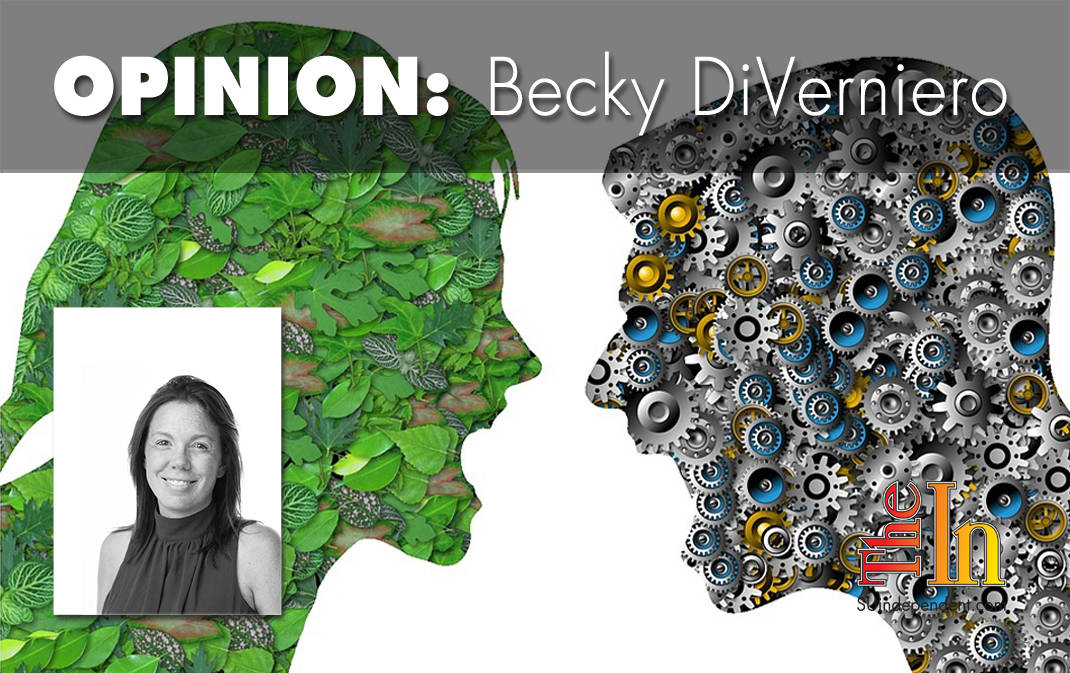 Any time I’ve made the mistake of telling strangers I teach interpersonal communication courses to college students for a living, I’m often met with a frantic description of every relationship problem that particular has ever experienced and an expectation for me to tell them what went wrong and counsel them on their conflicts.
Any time I’ve made the mistake of telling strangers I teach interpersonal communication courses to college students for a living, I’m often met with a frantic description of every relationship problem that particular has ever experienced and an expectation for me to tell them what went wrong and counsel them on their conflicts.
I don’t want to hear about other people’s problems. That’s why I became a professor instead of a therapist.
With that said, I think there’s some basic ideas from the courses I teach that can help the average individual as long as they possess the ability to be introspective, are willing to listen to their relational partners, and have some basic common sense.
My biggest piece of advice to my students — and therefore also to the handful of people who will actually read this column — is that trying to understand a conflict solely based on the moment of the conflict episode itself will likely leave you scratching your head and/or unfulfilled by the conflict outcome. The influences impacting that conflict episode and the makeup of our relationships are extremely important variables in figuring out what the problem really is.
One of the background influences I find most helpful in understanding how conflict occurs is attachment styles. There are three general types:
 Secure
Secure
Someone secure is confident in their attachments, and while they might miss people, they do not fear the absence of others.
Anxious
Feeling unsure about others’ affections and being openly upset at their absence, they likely need frequent reassurance that they are cared for.
Avoidant
An avoidant style involves the same feelings as an anxious one, but this person is more self-reliant and hides their fear of abandonment.
When I talk about these, whether with my students or with people outside academia, there is often a very quick and strong negative response to the ideas of anxious and avoidant styles with many people claiming to be secure and rational in all their relationships. Congrats to them for being so well adjusted! It’s so much easier to deal with conflict when it’s all the other person’s fault!
In reality, if everyone was so secure in every situation, we wouldn’t have so many issues with people taking things personally, freaking out over minor relational issues, or fears of being cheated on or left. So there goes the point of literally every reality TV program ever made.
While anxious and avoidant styles are obviously potentially problematic to creating and maintaining successful relationships, I would caution everyone not to judge these styles so quickly.
First, it’s likely that everyone has either actually had at least moments of these more negative attachment styles: You had a bad end to a relationship, or the person in the relationship made it very difficult to feel secure because they withheld, cheated, or acted like they generally didn’t care about you. Although these attachment styles are generally set in our early childhood, they don’t exist in a vacuum. They can and do change over time depending on the contexts we find ourselves within.
 Second, looking down on people with the more negative styles is treating them as though they have always actively chosen to be that way and/or as if there is no hope for them. For instance, I would definitely classify myself as avoidant. I withhold, I have a massive abandonment complex, and assume it’s just a matter of time before people I care about will leave me. I keep my fears to myself, so I come off as uncaring or cold to family, friends, and romantic partners (probably strangers, too, but who cares about them?).
Second, looking down on people with the more negative styles is treating them as though they have always actively chosen to be that way and/or as if there is no hope for them. For instance, I would definitely classify myself as avoidant. I withhold, I have a massive abandonment complex, and assume it’s just a matter of time before people I care about will leave me. I keep my fears to myself, so I come off as uncaring or cold to family, friends, and romantic partners (probably strangers, too, but who cares about them?).
My behavior is easy to judge as negative and has likely driven some people away, but a quick look into my past can shed some light on why the avoidant style developed to begin with.
My father, who was my hero, dropped dead when I was 7, and from then on, at least one family member got cancer or died every single year until I was in my late 20s. Additionally, most friends and romantic partners have suddenly disappeared with no warning when they decide they didn’t want my company anymore, so I have a history of being abandoned through both deaths and ghosting. So while it’s my job to work at being less avoidant, I also think it’s new friends’ and romantic partner’s jobs to give me time to do it as well as help give me reasons to feel secure.
 Regardless, the styles are something to think back to when we cannot understand why someone might be acting a particular way in a conflict situation. If you realize that a new boyfriend or girlfriend is acting very clingy or find out they’ve been going through your Facebook like crazy and getting angry about old photos of you and another romantic partner, this doesn’t necessarily mean that you ended up with a stalker and your relationship is doomed. It probably means they have an anxious attachment style and are terrified of being more connected to you than you are to them. This does not excuse their problematic behavior but, at least at first, should be treated as an opportunity to get them to explain what has happened to them in the past to make them think that behavior is necessary as well as to find out what you can do to make them feel more secure. It becomes a problem if they cannot calm panicky, accusatory behavior down over time — it should be both of you working toward a secure attachment.
Regardless, the styles are something to think back to when we cannot understand why someone might be acting a particular way in a conflict situation. If you realize that a new boyfriend or girlfriend is acting very clingy or find out they’ve been going through your Facebook like crazy and getting angry about old photos of you and another romantic partner, this doesn’t necessarily mean that you ended up with a stalker and your relationship is doomed. It probably means they have an anxious attachment style and are terrified of being more connected to you than you are to them. This does not excuse their problematic behavior but, at least at first, should be treated as an opportunity to get them to explain what has happened to them in the past to make them think that behavior is necessary as well as to find out what you can do to make them feel more secure. It becomes a problem if they cannot calm panicky, accusatory behavior down over time — it should be both of you working toward a secure attachment.
Articles related to “How attachment styles can help us understand conflict”
Eight ways to fortify marital bonds and rekindle your marriage



